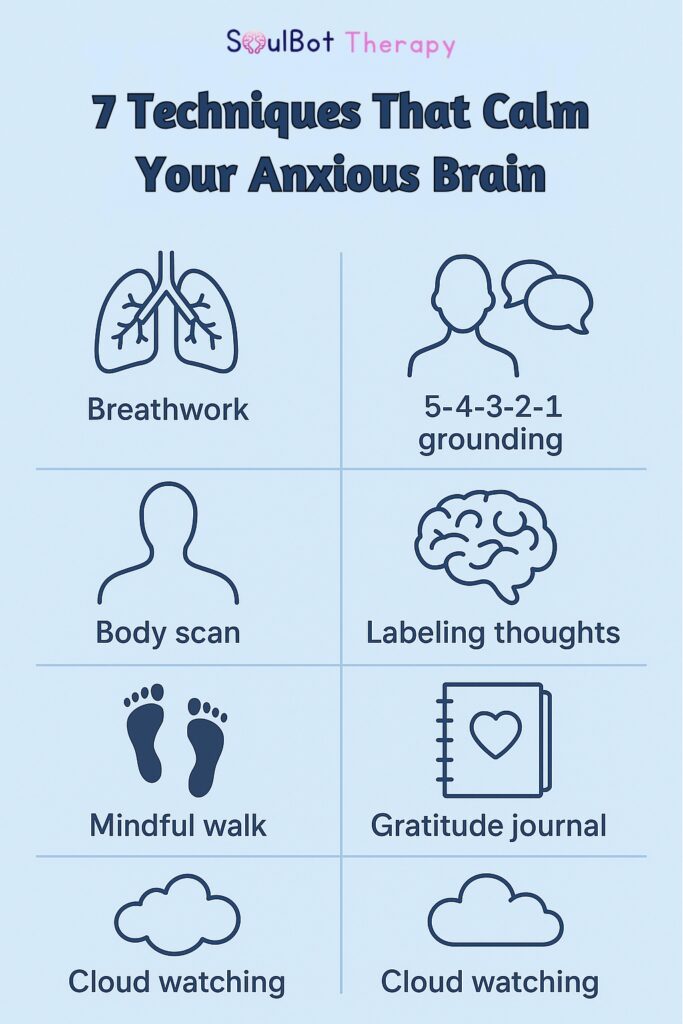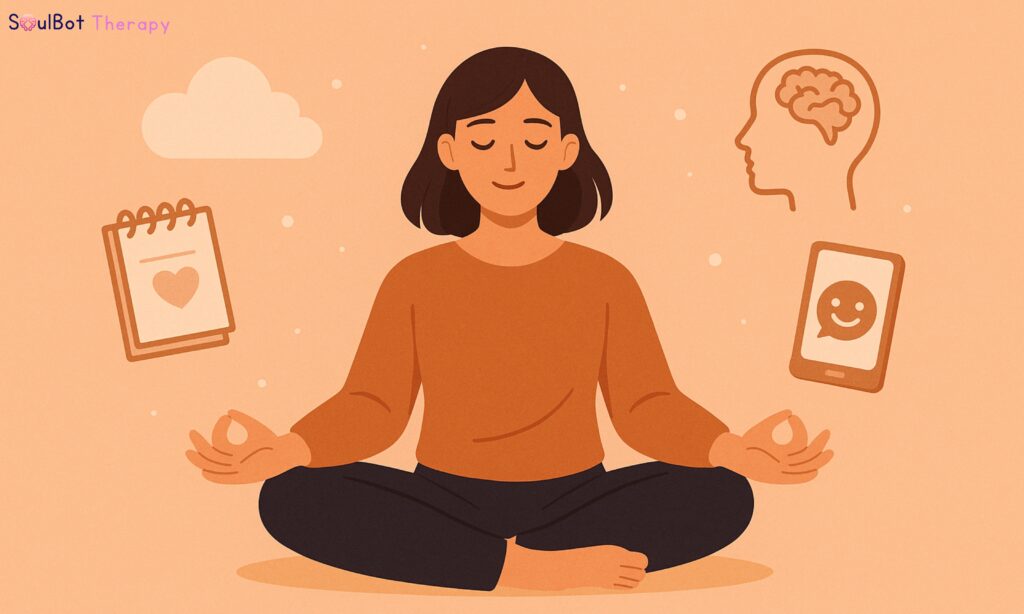Mindfulness for anxiety isn’t a trend; it’s a tool that’s backed by science and results.
If your brain feels like a browser with 37 open tabs and none of them are loading, chances are, you’re overwhelmed.
Welcome to the anxious mind. But what if you could train it to slow down… gently?
Mindfulness isn’t about emptying your mind.
It’s about noticing what’s there, without judging it. And when done right, it can become your most powerful tool for calming anxiety naturally.
📘 Read More About What Anxiety Really Feels Like
🧠 What Is Mindfulness (And Why It Works for Anxiety)?
Mindfulness is the act of paying attention to the present moment, your breath, sensations, thoughts, without trying to fix or fight them.
Anxiety thrives in the future:
“What if this happens? What if that doesn’t?”
Mindfulness gently brings you back to now.
🔍 Fact: Mindfulness-based cognitive therapy (MBCT) has been shown to reduce anxiety symptoms by over 60% in clinical trials.
🛠️ 7 Proven Mindfulness for Anxiety Techniques for Relief
1. Breath Anchoring
Close your eyes. Inhale for 4… hold for 4… exhale for 4.
Repeat 3 times.
Feel your breath as the anchor in the storm.
2. 5-4-3-2-1 Grounding
Name:
- 5 things you see
- 4 things you can touch
- 3 things you hear
- 2 things you smell
- 1 thing you taste
It rewires your focus away from spiraling thoughts.
3. Body Scan Meditation
Start from your toes. Slowly move your attention upward, noticing tension without fixing it. It’s presence, not pressure.
4. Labeling Your Thoughts
Notice your anxious thought.
Now label it: “That’s a fear.” “That’s a worry.”
This distances you from the spiral.
5. Mindful Walking
Leave your phone. Feel your feet hit the ground.
Notice textures, colors, and sounds.
You’re not escaping, you’re arriving.
6. Gratitude Journaling
Each night, write 3 good things, however small.
It trains the brain to shift away from what’s wrong and notice what’s steady.
7. Observe Without Judgment
Let your thoughts pass like clouds.
No clinging. No running. Just watching.
🤯 Can You Practice Mindfulness While Overthinking?
Absolutely, in fact, that’s when you need it most.
You don’t have to quiet your mind. You just have to notice when it wanders and bring it back. Again. And again.
That is the practice of mindfulness for anxiety.

🤖 How SoulBot Helps You Build a Daily Mindfulness Habit?
- Daily check-ins with guided breathing
- Journaling space that tracks anxiety triggers
- Affirmation reminders at your preferred time
- No pressure, no judgment, just support
Think of it as your AI mental health companion always listening, never labeling.
⚡ Quick Tips to Build Mindfulness for Anxiety
- Set a recurring 2-minute timer post-lunch
- Stack it with something you already do (e.g., brushing teeth = 5 breaths)
- Use SoulBot’s journaling prompt every morning
- Don’t aim for perfect, aim for presence
🎯 Final Word
You’re Not Broken. You’re Just Tired.
Anxiety makes your mind loud mindfulness makes it honest.
You don’t need to escape your thoughts — you just need to come home to them, gently.








